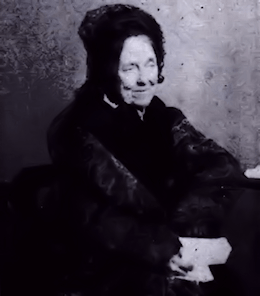Textus Receptus Bibles
Julia E. Smith Translation 1876
| 2:1 | And ye being dead in faults and in sins; |
| 2:2 | In which when ye walked according to the life of this world, according to the ruler of the power of the air, of the spirit now energetic in the sons of disobedience: |
| 2:3 | Among whom also we then all occupied ourselves in the eager desire? of our flesh, doing the wills of the flesh and the thoughts; and were by nature children of wrath, as also the rest. |
| 2:4 | But God, being rich in mercy, by his much love which he loved us, |
| 2:5 | And we being dead in faults, he made alive together with Christ, (by grace are ye saved;) |
| 2:6 | And raised together, and seated together in heavenlies in Christ Jesus: |
| 2:7 | That he might show in times coming the surpassing riches of his grace in kindness to us in Christ Jesus. |
| 2:8 | For by grace are ye saved through faith; and this not of you: the gift of God: |
| 2:9 | Not of works, lest any one should boast. |
| 2:10 | For we are his work, created in Christ Jesus to good works, which God prepared beforehand that we should walk in them., |
| 2:11 | Wherefore remember, that ye then the nations in the flesh, being reckoned Uncircumcision by the Circumcision in the flesh reckoned made by hands; |
| 2:12 | That ye were in that time without Christy alienated from the citizenship of Israel, and foreigners from the covenants of solemn promise, having no hope, and without God in the world: |
| 2:13 | And now in Christ Jesus ye who then being far off have become near in the blood of Christ. |
| 2:14 | For he is our peace, having made both one, and having loosed the middle partition wall of the enclosure; |
| 2:15 | The enmity in his flesh, the law of commands in enactments, having left unemployed; that he might create in himself one new man, making peace; |
| 2:16 | And that he might reconcile anew both in one body to God by the cross, having slain the eninity in it: |
| 2:17 | And having come, he announced good news, peace to you afar off, and to those near. |
| 2:18 | For by him we both have access in one Spirit to the Father. |
| 2:19 | Wherefore then are ye no more foreigners and sojourners, but fellow-citizens of the holy, and the household of God; |
| 2:20 | Built upon the foundation of the sent, and of the prophets, Jesus Christ himself being the corner stone; |
| 2:21 | In whom all the building fitted together increases into a holy temple in the Lord: |
| 2:22 | In whom also ye are builded together for the dwelling of God in the Spirit. |

Julia E. Smith Translation 1876
The Julia Evelina Smith Parker Translation is considered the first complete translation of the Bible into English by a woman. The Bible was titled The Holy Bible: Containing the Old and New Testaments; Translated Literally from the Original Tongues, and was published in 1876.
Julia Smith, of Glastonbury, Connecticut had a working knowledge of Latin, Greek and Hebrew. Her father had been a Congregationalist minister before he became a lawyer. Having read the Bible in its original languages, she set about creating her own translation, which she completed in 1855, after a number of drafts. The work is a strictly literal rendering, always translating a Greek or Hebrew word with the same word wherever possible. Smith accomplished this work on her own in the span of eight years (1847 to 1855). She had sought out no help in the venture, even writing, "I do not see that anybody can know more about it than I do." Smith's insistence on complete literalness, plus an effort to translate each original word with the same English word, combined with an odd notion of Hebrew tenses (often translating the Hebrew imperfect tense with the English future) results in a translation that is mechanical and often nonsensical. However, such a translation if overly literal might be valuable to consult in checking the meaning of some individual verse. One notable feature of this translation was the prominent use of the Divine Name, Jehovah, throughout the Old Testament of this Bible version.
In 1876, at 84 years of age some 21 years after completing her work, she finally sought publication. The publication costs ($4,000) were personally funded by Julia and her sister Abby Smith. The 1,000 copies printed were offered for $2.50 each, but her household auction in 1884 sold about 50 remaining copies.
The translation fell into obscurity as it was for the most part too literal and lacked any flow. For example, Jer. 22:23 was given as follows: "Thou dwelling in Lebanon, building as nest in the cedars, how being compassionated in pangs coming to thee the pain as in her bringing forth." However, the translation was the only Contemporary English translation out of the original languages available to English readers until the publication of The British Revised Version in 1881-1894.(The New testament was published in 1881, the Old in 1884, and the Apocrypha in 1894.) This makes it an invaluable Bible for its period.